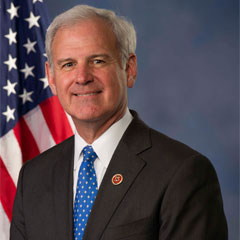
Closing down the American economy has a real and enormous effect on the lives of countless Americans. Layoffs and job losses are devastating for individuals, families, and communities. In good times, it generally takes three to six months for someone to find a job after a layoff. Of course, these are not good times. Moreover, closures and layoffs go deeper than this. Large unemployment numbers can also make it much harder for areas to move into economic recovery when a crisis is over.
Certainly, the government’s coronavirus response has not been perfect, but President Trump, Senator Rubio, Secretary Mnuchin, and others deserve a lot of credit for thinking about how to stop layoffs and for their innovative solution, the Paycheck Protection Program (PPP), to help everyday Americans. The idea behind PPP is simple, keep Americans from being laid off or furloughed through this difficult time. Through PPP, the President offered small businesses a good deal, low interest loans to cover payroll, rent, and utilities. These loans carried an important carrot, if the business retains its payroll or rehires previously laid off workers, the loan is forgiven by the federal government.
This deal for small businesses was more popular than the President’s team could ever have imagined. In late March, we passed the CARES Act which allocated $349 billion for PPP. This funding was exhausted in just a couple of weeks, but those payments kept countless businesses open and their employees on the payroll. To keep the program going, Congress passed the Paycheck Protection Program and Health Care Enhancement Act, or “CARES 2,” to replenish PPP funding. With the injection of $320 billion provided by this bill, the SBA has begun Round 2 of accepting PPP loan applications through banks and credit unions.
The data shows just how effective the PPP has been. In the week since Round 2 of PPP loan processing began on April 27, 2.2 million loans were made to American small businesses, more than during Round 1. Those 2.2 million loans have a total value of over $175 billion. And the average loan size is $79,000, an indicator that the program is going towards assisting the smallest of small businesses.
There are other indicators that PPP loans are going towards small businesses in small communities, those that most often fell through the cracks and did not receive aid before Round 1 funding went dry. Nearly 500,000 of Round 2 loans were made by lenders with less than $1 billion in assets. And about a third of the 2.2 million loans – over 850,000 – were made by lenders with $10 billion in assets or less. Here in Alabama, in Round 2 alone, the SBA has approved 26,724 loans for $338,700,245.
All told, since PPP launched on April 3, the federal government has processed over 3.8 million loans for more than $500 billion. Astonishingly, that’s over half a trillion dollars in economic support to small businesses and their employees in only a month. It is estimated PPP has saved 30 million jobs, just accounting for the first round of funding.
This is on top of the vast amount of other support the federal government has provided, including $30 billion for a Public Health and Social Services Emergency Fund to aid our hospitals and health care providers. This fund has paid $449,481,945 in distribution payments to 4,652 providers and systems in Alabama. In our district alone, 581 payments have been made totaling $66,833,755.62. While I know that many continue to wait on unemployment benefits, the amount of help already provided to those in need based upon money Congress provided is staggering. The Alabama Department of Labor has paid out $503 million in unemployment benefits to 206,694 claimants since March 16.
There is no doubt that the PPP and other federal programs have been an important cushion to the economy, saving jobs and businesses. But, we must remember they are temporary measures and designed to cushion the damage caused by COVID-19. The federal government cannot write enough checks to come anywhere close to completely mitigating the collateral damage caused by coronavirus. Washington cannot be the American economy. We must reopen or our efforts thus far to cushion the blow will fall flat.
